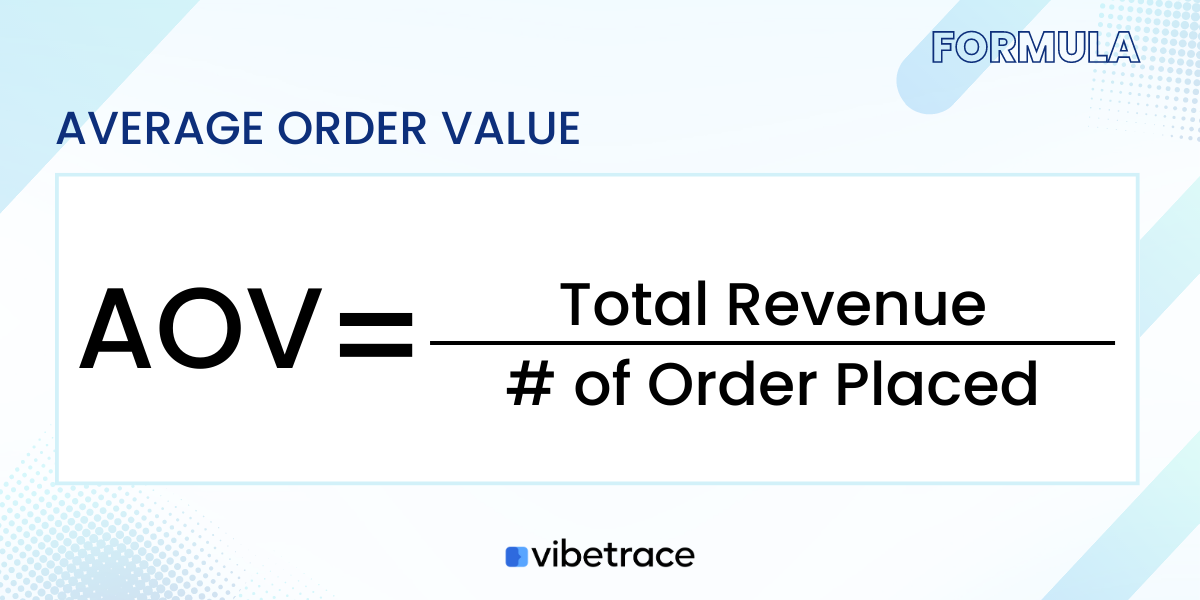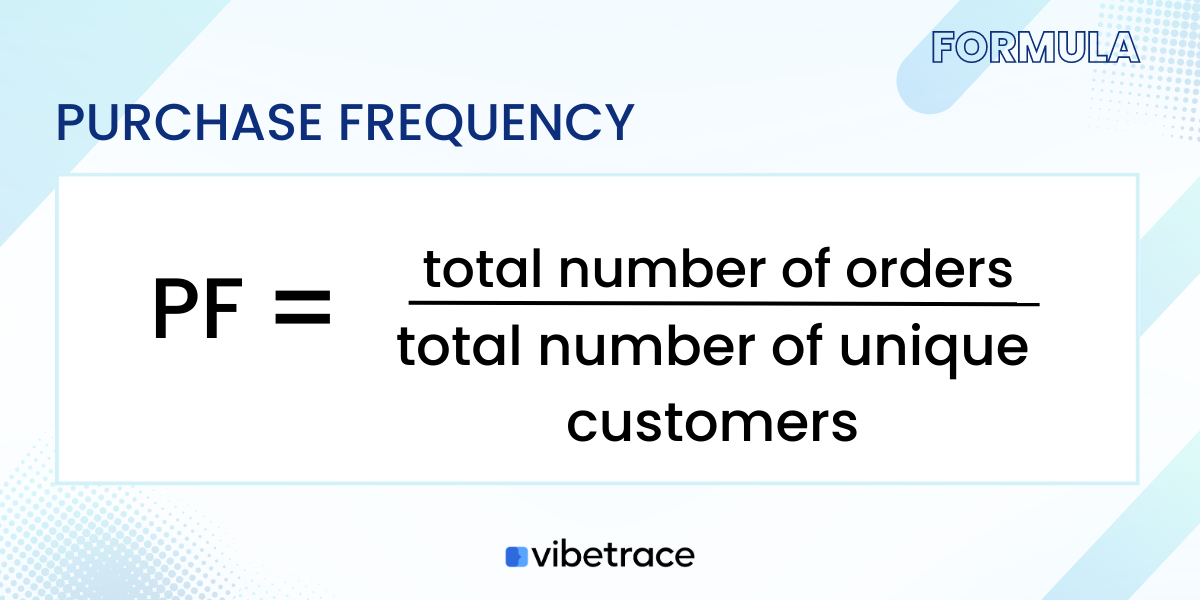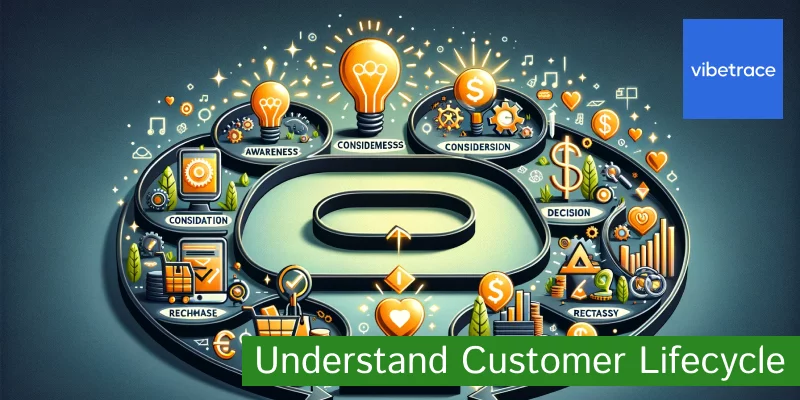If you’re in a relationship, you know that to enjoy all those happy moments—the gazing into each other’s eyes, the holding of each other’s hands—there’s a lot of hard work needed.
The relationship with your ecommerce customers is much the same, though you should avoid gazing into their eyes most of the time.
Knowing and understanding your customers means you can develop and nurture that relationship. It’s not just about knowing their demographics, depth of knowledge plays a crucial role too.
That means understanding who your target customers are, their needs, interests, and pain points.
Knowing who your customers are on a deeper level will help you to effectively market your products and services to cater to their needs. This, in turn, leads to their demands being met with personalised customer experiences, maximised customer satisfaction, and increased revenue for your company—all in a balanced way that nurtures your customer relationships.
A major part of knowing your customers is understanding the customer lifecycle.
What is the customer lifecycle?
The customer lifecycle details the stages your customers go through in their relationship with you.

That life cycle begins with the first click onto your site and “ends” if they leave you forever. It includes the before, during, and after of a transaction and can cover many touchpoints.
What are the customer lifecycle stages?
Awareness
Think of it like this: The customer wakes up one morning and at that point, isn’t aware of you, your brand, or your products. This is the day, however, that will change.
Today, they start to hear a niggling voice inside their head reminding them of a problem in their life that needs solving.
Now they’ve become aware of this voice, it just won’t stop nagging! But they’re not sure exactly what to do about it so they decide to do some research. Where do they go? The internet, of course.

How they discover you can happen in different ways. They may do a Google search looking for the best video conferencing equipment (and your SEO has placed you high in the rankings).
They may see an ad for your business, or they may see a discussion on social media. It may even be the case that Bob from next door mentions how great your products and services are while sharing a cold beer over the fence.
While you may think that the purchase stage is the most important, it’s actually this process of discovery and learning. It’s the ecommerce equivalent of that first meeting of eyes across a dancefloor.
As well as the most important stage, it’s also, from your perspective, the most expensive. This is where the majority of your CAC (customer acquisition costs) are incurred. The costs of most of your marketing efforts, your ads, your website, are aimed at this particular moment in time.
Once the customer has discovered you, they will then want to learn about you. Are you reliable? Will you provide a positive customer experience?
Engagement
So, eyes have met across the dancefloor, now it’s time to move to your first dance.
In this stage, the customer is learning about you and collecting information on how what you offer might resolve their problem. They might be:
- Reading the information on your website, including any related FAQs.
- Looking for reviews from prior customers regarding both the product and your service.
- Comparing your product with those offered by your competitor(s). That can include comparing prices, features, pros and cons, and reviews.
The primary source of their information is always going to be your website, an area where Digital Assistant can bring major benefits. It enables brands to recreate the in-store experience online; guiding and supporting customers, thus boosting engagement.
However, customers may also need to contact you directly, so it helps to have a good customer support structure. Although most businesses are taking an omnichannel approach to customer support nowadays, phone-based customer support is still the go-to option for the majority of customers.
Ensure your customer support agents are properly trained to effectively and efficiently handle a variety of requests.
Agents must be trained on the most appropriate ways to deal with support requests, ensuring they’re in line with modern and every-changing customer expectations.
A foolproof way of doing this is to ensure your business phone system offers features that empower your agents to better handle support requests.
One of the most important things to consider is that their call is answered quickly and by the right person. Remember that one of the most important aspects of the customer experience lies in human contact and personalisation.
For example, you might try to eliminate cold transfers (when a call is transferred without a receptionist or live agent speaking to the customer first) in favor of warm transfers.
Conversion
The DJ has just put on George Michael’s “Careless Whisper”, so it’s time to move in for that first kiss.
Or in terms of your ecommerce business, it’s time for the interested party to make their first purchase and become a paying customer. This is the moment where the magic happens and you jump up and down for joy.
Slow down though, just because they’re slow dancing with you doesn’t mean that passionate kiss will happen. There are still potential hurdles, including that of cart abandonment.
More than £18 billion in potential sales is lost to UK online retailers every year. 41% of shoppers will walk away before making a final purchase, compared to 24% who would do the same in a physical store.
A good retargeting strategy from your marketers can claw some of those lost customers back.
Retention
You got that first kiss, but what you really want is a long term relationship. In terms of your customer, you want retention.
Don’t think only big brands can retain customers, it’s all about how you execute your ecommerce model and how you utilise tools like Digital Assistant on your site.
At this stage, you want to make your relationship more meaningful and to build those initial ties so customers become repeat customers, thus increasing their customer lifetime value (CLV).

This means nurturing those newly formed customer relationships with valuable and relevant information that pertains to your brand. It’s about keeping you on their radar, so to say.
Consider encouraging them to sign up to email marketing lists or a newsletter. This way, you can keep them updated about goings on within your company or share valuable industry news that they might engage with. You also need to provide solid and accessible customer support.
Something that will play a big part here is your customer relationship management (CRM) software, which can keep track of customer data and help you determine how to improve customer satisfaction.
Advocacy
Even if your business has an audience of loyal customers who buy from you again and again, it’s not going to grow unless people start advocating for your product or service to the people they know, whether online or offline.
Strive to ensure your ecommerce customers areso loyal to your brand, products, and services that they start introducing you to their friends and family.
They’ll also leave reviews on your product, be it on your own site or on an independent review site. And they’ll discuss and advocate for your brand on social media.
Why is advocacy important to you? The primary reason is that customer advocacy offers a great ROI. In fact, you don’t have to invest anything extra in this scenario. Your customer base grows without you having to spend on advertising or digital marketing to attract these new customers thanks to the efforts of brand advocates.
The key to this though is through exceptional customer experiences throughout the lifecycle.
The benefits of customer lifecycle management
CLM is about monitoring and measuring those different stages and then analysing the collected data to give you an overall view of your business performance.
By incorporating all the stages of the customer journey in your analysis you can boost your business in many ways. From improving your customer loyalty program to boosting CLV.
Brand loyalty
A one-off high value order is good, but an ongoing long-term relationship with a customer is better. Brand loyalty and customer retention are the Holy Grail of your business.
If you’re seeing high rates of customer retention and loyalty, then it shows that you’re understanding and managing the customer lifecycle. You also have to show that you’re not content with one-off purchases and that you want a customer to return to your site or platform.
You need to show the customer you care about them and the interactions they have with you. That can include things as simple as setting up automatic email follow-ups to check they are happy with the product and to ask for feedback.
Do you like this article?
Join Mary and the Marketing Automation dedicated newsletter!

Stay connected to what’s really important to optimize your digital revenues.
By clicking the button, you accept our Terms & Conditions. Also you will need to confirm your email address.
Tracking and identifying problems at each stage
CLM is not just about looking at how well you manage each stage of the life cycle, it is also about identifying any issues customers may be having and any pain points that need attention. Depending where a pain point is in the life cycle, that issue may prevent the customer from moving forward or it may drive them to a competitor.
Examples of issues at each stage include:
- Awareness: Low numbers of people are finding you due to poor SEO practices. SEO competitor analysis can help offset this issue by alerting you to how your website is ranking on popular search engines like Google and Bing. Armed with this information, you can determine how well-optimized your site is and highlight key areas of improvement.
- Engagement: Poor construction of a website (including poor navigability or search function).
- Conversion: If you have a complicated checkout process or high shipping costs compared to other businesses, then you will see a high cart abandonment rate. An efficient POS system is a great way of connecting your various sales channels.
- Retention: To encourage brand loyalty, you need to really connect with your customers. If you don’t follow up on purchases or offer them the chance to sign up to mailing lists or newsletters, then they may not return.
- Advocacy: Customers who advocate on your behalf are like gold dust. If you’re not targeting already loyal customers with special offers or similar, then they may never move to advocacy.
Recognising issues through analysis of your metrics and KPIs means that you can remedy those issues. For example, if you’re getting poor levels of engagement, A/B testing to improve your website can increase customer engagement levels dramatically.
Measuring and forecasting customer lifetime value (CLV)
Put simply, CLV is the amount of money a customer will spend over the time they have a relationship with you. If Jim made 12 purchases in a year, the Average Order Value (AOV) of his purchases was £50, and your average retention is eight years, then Jim’s CLV is £4,800.
Where understanding this offers you an advantage is in terms of forecasting potential future revenue and adjusting your strategies based on that info.
If you forecast a rise in revenue based on your CLVs, then you may choose to expand your product line or look at other areas where you can grow as a company.
Customer lifecycle marketing strategies
Recognising the different stages of the customer lifecycle and knowing the benefits is one thing, but what strategies should you be employing to optimise your customer lifecycle?
Awareness stage
You want potential customers to really notice you, but how do you do that?
- Identify target customer base & build buyer personas. If, for example, you sell children’s bicycles, then there’s little point in having your marketing target everyone. Your primary target is going to be parents with young children.
- You can then create a fictional buyer persona based on that target audience. From the data you collect, your persona may be a 35-year-old woman with two school age children. You can then formulate content that catches their attention.
- Create a content strategy. Once you’ve defined your average persona, then you need to design content for them. Using the previous example, you may shoot short videos featuring the mother in the park with her children on their bikes.
Engagement stage
Once a customer visits your site, you want them to actively engage, so make the customer journey as smooth and painless as possible.
- Self-service. The perfect customer will visit, look, and buy. But they are a rarity. Your potential customers will have questions and will likely want to know more than is in the product description. With 88% of customers wanting to have some level of self-service option, this can be a crucial factor for your site. Provide a knowledge base or FAQ section that answers the most common questions. Adding how-to guides or videos that let them see the product being used can also help.
- Proactive customer support. Once you have a customer, be proactive with them. Use CRM to collect data you can use, ask them for feedback, and use survey tools to find out more about their likes and dislikes. If they don’t want to use self service, make it easy for them to contact you via a number of channels and promote first call resolution.
Conversion stage
You want customers to have a smooth journey through your sales funnel. Marketing automation can be of huge help in this area, especially the use of tools such as Digital Assistants to guide the customer through the process or to suggest additional products.
- Frictionless purchasing process. Being forced to create an account and complicated check out processes are major contributors to cart abandonment. Offering guest accounts and several ways of paying can help make this stage smoother.
- Accessible customer support channels. If a customer hits a hurdle, you want them to be able to solve any issue easily. That means offering omnichannel options for contacting you, from live chat through to social media messaging, phone calls, and emails or SMS.
To offer competent levels of telephone-based support, you should look at your current system and improve it.
Retention stage
Customer retention is one of your main targets. A loyal customer will have a larger CLV than a one-off buyer. To achieve that, actively engage with them and show them that you really care.
- Post-purchase engagement. You already know that keeping a customer is cheaper than acquiring one. Use personalisation whenever you engage with them to keep them with you. Automation makes personalised customer support easy, whether you’re sending them an email or an SMS. Speaking of email, email remarketing is a vital consideration at this stage. With Digital Assistant, you can use behavioural email to recover sales that may otherwise be lost. In short, it lets you send messages personalised according to real customer activity on your site.
- Voice of the Customer (VoC) program. If you implement a VoC program, you’re not only collecting every single piece of feedback from your customers to drive decisions, you’re also showing your customers that you listen to them. It can give you real time insights into the CX of your business.
Advocacy stage
Loyal customers are great, but customers who advocate for you are brilliant. Have strategies in place that encourage your loyal customers to go one step further.
- Ask for reviews and referrals. Referrals and word of mouth are a great way to gain new business with virtually zero CAC. Offer incentives where if a person recommends you, both they and the new customer receive some sort of reward.
- Loyalty programs. With 69% of consumers choosing brands that offer loyalty programs or points, this is a great strategy. Such programs strengthen the connection between customer and brand, offer a great ROI, and can increase retention and referral rates.
- Brand community. If you can build a strong community, you go beyond simple brand loyalty and retention. You can reduce your advertising costs as your community helps to generate new customers. Use social media to encourage that sense of community and consider different tiers for engaged customers.
Customer lifecycle metrics
You should already know the value of metrics and KPIs across your business, and that rule holds true with the customer lifecycle, too.
Cost per acquisition
Knowing this is crucial for a business to thrive and grow. It’s not good if you’re spending £150 to acquire a customer who spends a total of £100 with you. That’s why this metric is important. You need to be seeing a good ROI.
Cost per acquisition includes all sales and marketing expenses you incur in acquiring a new customer. In order to calculate it, you take the total spend over a given period then divide it by the total number of customers you acquired in that time. For example:
Company A spent £100,000 on all sales and marketing activities over a year. In that time, they acquired 5,000 new customers:
100,000 = £20
5,000
Marketing impressions and conversions
Impressions
You have amazing marketing campaigns. Your team has worked hard on them and you think they look wonderful. But how many people are seeing them? That’s what marketing impressions tell you.
For example, you sent out 20,000 emails for your new marketing campaign. Of those, 2,000 bounced and weren’t delivered. Another 8,000 emails were not opened. The remaining 10,000 emails were opened, so those are your impressions.
If the total cost of sending those emails was £1,000, then your cost per impression was 1000/10000 = 10p per impression.
Your marketing is an area where automation becomes a crucial tool in operating as efficiently as possible.
In the case of emails, there are multiple tools available that can carry out the repetitive tasks involved.
Conversions
A customer just looking at your ad is not going to pay salaries. You want them to convert to a purchase. So it’s important to have an idea of what your average conversion rate is in relation to interactions with your ads (or emails or other marketing strategy). You also want to learn how to improve your conversion rates.
In order to know that rate, you take your number of conversions and divide it by the total number of interactions that can be linked to those conversions in the time period you’re looking at.
So, if you had linked 100 conversions to 2,000 interactions, then 100/2,000 would give you a conversion rate of 5%.
Average order value
AOV is a good metric as it helps you gauge the overall efficiency of both your marketing efforts and your pricing strategy. It’s also a key metric in making data-driven decisions as you move forward and tweak or formulate new strategies.

To calculate your AOV, you simply take your total revenue in a given time period and divide it by the total number of orders.
For example, in one quarter, you have total sales of £300,000, generated by 5,000 orders. So, 300000/1000 gives you an AOV of £60.
Transaction frequency
Transaction frequency refers to how often your average customer makes a purchase with you. It’s a good metric to gauge how well your customer retention strategies are working.
To calculate your transaction frequency, you divide the total number of orders in a given time period by your total unique customers in that same period.

Looking at your TF over different periods can give different insights. For example, looking at it over a year can help show you buying habits during holiday periods or major sales.
Engagement rate
How do you know your content is working? Or a particular campaign you launched? This is where engagement rate comes into play. The tricky thing about ER is that you will calculate it differently according to the platform you are analysing.
The basic formula to calculate this is total engagement divided by total followers x 100 (to give you a rate as a percentage).
An example of the differences between platforms is that with Facebook, your total engagement would be made up of the total amount of reactions, comments, and shares, while with Instagram it would comprise likes and comments.
Putting it all together
The customer lifecycle begins the first time a potential customer discovers your brand. It is also the start of what you hope will be a long-standing two-way relationship.
Understanding the life cycle is something that can benefit everyone. For you, it’s an opportunity to not only increase revenue, but also to understand your customers better and to improve their overall journey.
By looking at each stage, analysing the touchpoints, and identifying any issues, you can improve the cycle as a whole.
Tools and automation which can slot into those stages also bring benefits. Those tools can include things like Digital Assistant, and looking at case studies on the use of digital assistants can give you real insights.
Improving your life cycle can also decrease costs, especially in the area of marketing budgets and CAC.
Building a base of loyal customers who refer your brand and become influencers means that you can reduce the costs spent on acquiring new customers.

